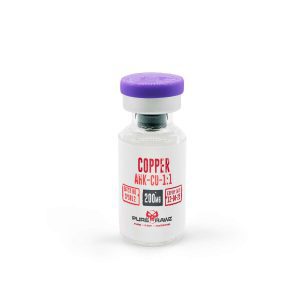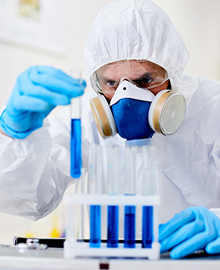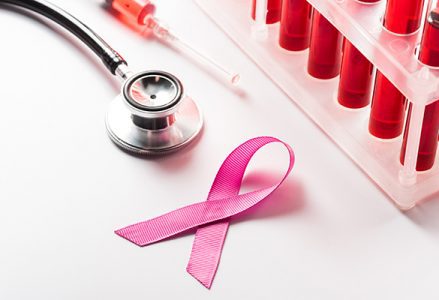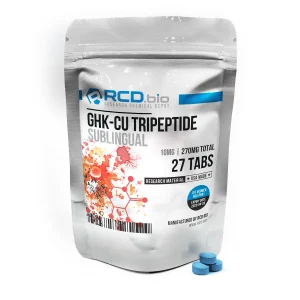Sarmscentral is a leading online retailer specializing in high-quality Selective Androgen Receptor Modulators (SARMs). Our mission is to provide athletes, bodybuilders, and fitness enthusiasts with the best possible products to help them achieve their goals.
- SARMS
- SERMS & PCT
About
View MoreSarmscentral is a leading online retailer specializing in high-quality Selective Androgen Receptor Modulators (SARMs). Our mission is to provide athletes, bodybuilders, and fitness enthusiasts with the best possible products to help them achieve their goals.
Latest Blog

- PROHORMONES
About
View MoreSarmscentral is a leading online retailer specializing in high-quality Selective Androgen Receptor Modulators (SARMs). Our mission is to provide athletes, bodybuilders, and fitness enthusiasts with the best possible products to help them achieve their goals.
Latest Blog

- AAS
About
View MoreSarmscentral is a leading online retailer specializing in high-quality Selective Androgen Receptor Modulators (SARMs). Our mission is to provide athletes, bodybuilders, and fitness enthusiasts with the best possible products to help them achieve their goals.
Latest Blog

- PEPTIDES
About
View MoreSarmscentral is a leading online retailer specializing in high-quality Selective Androgen Receptor Modulators (SARMs). Our mission is to provide athletes, bodybuilders, and fitness enthusiasts with the best possible products to help them achieve their goals.
Latest Blog

- NOOTROPIC
About
View MoreSarmscentral is a leading online retailer specializing in high-quality Selective Androgen Receptor Modulators (SARMs). Our mission is to provide athletes, bodybuilders, and fitness enthusiasts with the best possible products to help them achieve their goals.
Latest Blog
Nothing Found.
Apologies, but no results were found for the requested archive.

- OTHER COMPOUNDS
About
View MoreSarmscentral is a leading online retailer specializing in high-quality Selective Androgen Receptor Modulators (SARMs). Our mission is to provide athletes, bodybuilders, and fitness enthusiasts with the best possible products to help them achieve their goals.
OTHER COMPOUNDS
Latest Blog

Overview
Are you in your 40s and now getting afraid to stand in front of the mirror like you used to, just because of those stubborn wrinkles and dark circles? An accomplished person like you getting less confident because your friends and age-mates look younger? Your worries are not here to stay as we bring you the COPPER PEPTIDES; the best skin-restoring serum modern-day science has produced. And the best part is that it’s not just our opinion!
Dermatologists and skin care experts are all in awe of the countless benefits this peptide is capable of producing and as such, are recommending to people like you who are ever so pertinent about their skin.
Product Information
Copper peptides are compounds that contain copper ions bound to small protein fragments. They have gained attention in the skincare industry for their potential anti-aging and skin-repairing properties. Copper peptides are believed to promote collagen production, reduce inflammation, and support skin regeneration.
Peptides in chemistry are referred to as glycyl-L-histidyl-L-lysine (GHK). All peptides have the power to easily bind with copper enzymes. So the GHK combined with the copper (Cu) becomes GHK-Cu.
These peptides include the same effects/ ingredients of compounds like hyaluronic acid, citric acid, sodium chloride, and vitamin C serum. {R}
When you start losing collagen and elastin with growing age, high-quality skin care products can help get them back into your skin. This is where copper peptides come in.
How Do Copper Peptides Work?
Peptides are essentially amino acids which are present in the human body. One of the many important functions that skin-friendly amino acids do in the body is the production of collagen and elastin, both connective tissues that provide for us our smooth and stretched skin.
However, with age, we tend to slowly lose our beloved collagen and elastin. Hence it’s natural to lose that glowing skin everybody so loved about you.
However, the rate at which people may lose collagen and elsatin varies in different people depending upon their lifestyles which include smoking, alcohol consumption, etc.
Buffet + Copper Peptides 1% is a universal formula that utilizes multiple skin support technologies including polypeptides that stimulate more collagen production in our skin, which target multiple signs of aging and treat skin deterioration signs including but not limited to:{R}
- Enlarged pores
- Age spots
- Hair Loss or breakages
- Fine lines and wrinkles
- Uneven skin tone
How to Use Copper Peptides

Collagen supplements are usually taken orally simply because the collagen molecule is large and cannot be absorbed through the skin. However, when it comes to copper peptides, they can be absorbed and used easily on the skin or body externally.
Peptides occur naturally in the skin. That’s why skin care products include this magic compound in their products to give the best results to their audiences. Peptides are amino acids that make up certain proteins needed by the skin. Peptides can stimulate your skin to make collagen. More collagen can lead to younger, stretched, and glowing firm skin.
Copper Peptide – Benefits
Copper peptides are compounds that combine the element copper with small protein fragments called peptides. They have gained attention in the skincare and cosmetics industry for their potential benefits, such as promoting collagen production and wound healing.
Antioxidant effects
These peptides are believed to have antioxidant properties and may help reduce the signs of aging when applied topically in skincare products. Copper peptides have been studied for various potential benefits, especially in the context of skincare and wound healing. Some of the reported benefits of copper peptides include:{R}
Stimulation of Collagen and Elastin Production:
Copper peptides are believed to promote the production of collagen and elastin in the skin, which can help improve skin firmness and elasticity. {R}
Wound Healing:
They may accelerate the healing of wounds and minor skin injuries by encouraging the formation of new blood vessels and skin cells. {R}
Antioxidant Properties:
Copper peptides can act as antioxidants, helping to protect the skin from oxidative stress and damage caused by free radicals. {R}
Anti-Aging Effects:
By supporting collagen production and improving skin texture, copper peptides are often used in anti-aging skincare products to reduce the appearance of fine and dynamic lines and wrinkles. {R}
Skin Repair:
They can aid in repairing damaged skin, including sun-damaged skin, by encouraging the turnover of old skin cells and the growth of new ones. {R}
Reducing Inflammation:
Copper peptides may have anti-inflammatory properties that can help calm irritated skin. {R}
Improving Skin Tone and Texture:
Users have reported improvements in skin tone, texture, and overall complexion when using products containing copper peptides. {R}
Firmer skin:
Ultimately almost 90% of the users with all kinds of skin types including oily skin have reported firmer and younger skin after use of the serum. {R}
Suited to All Skin Types:
It’s important to note that while these benefits are reported anecdotally and in some scientific studies, individual results can vary, and not all copper peptide products are created equal.
The effectiveness of these products may depend on their formulation, concentration, and how they are used. Consulting with a dermatologist or skincare professional is advisable before incorporating copper peptide products into your skincare routine.
Copper Peptide Side Effects
Copper peptide products are generally considered safe for topical use, but some individuals may experience side effects or sensitivities. Common side effects and considerations include:
Skin Irritation:
Some people may experience mild skin irritation, redness, itching, or a burning sensation when using copper peptide products. This is more likely to occur if you have sensitive skin or if the product is used in excessive amounts.
Allergic Reactions:
In rare cases, individuals may be allergic to copper or other components of the product. Signs of an allergic reaction may include rash, swelling, or hives.
If you experience any of these symptoms, discontinue use and seek medical advice.
Discoloration:
Prolonged use of copper peptide products, especially at higher concentrations, may potentially lead to skin discoloration or a bluish tint. This is more likely to happen when products are not used as directed.
Dryness or Peeling:
Copper peptides can promote skin cell turnover, which may lead to temporary dryness or peeling, especially when starting a new skincare routine. Adequate moisturization can help mitigate this effect.
Pregnancy and Breastfeeding:
Pregnant and breastfeeding individuals should consult a healthcare professional before using copper peptide products, as there is limited information on their safety during these periods.
FAQs
Do they Interact when used with Other Products?
Copper peptides should be used with caution alongside other active skincare ingredients like alpha hydroxy acids (AHAs), beta hydroxy acids (BHAs), or retinoids. Combining too many active ingredients may increase the risk of irritation.
Is Copper Peptide safe?
The FDA has not approved the use of GHK-Cu for human consumption yet as it still needs large-scale laboratory studies. For safety, synthetic copper peptides should be stored in a clean and dry place.
Where can you buy Copper Peptides?
PureRawz and RCD.Bio are the best places to buy copper peptides.
Pure Rawz offers other useful peptides that could cater to your research needs.
We provide reference materials with every product we sell to be the best supplier of research chemicals. Our products are all accompanied by an independent, third-party Certificate of Analysis for identification, purity, and concentration. {R}









